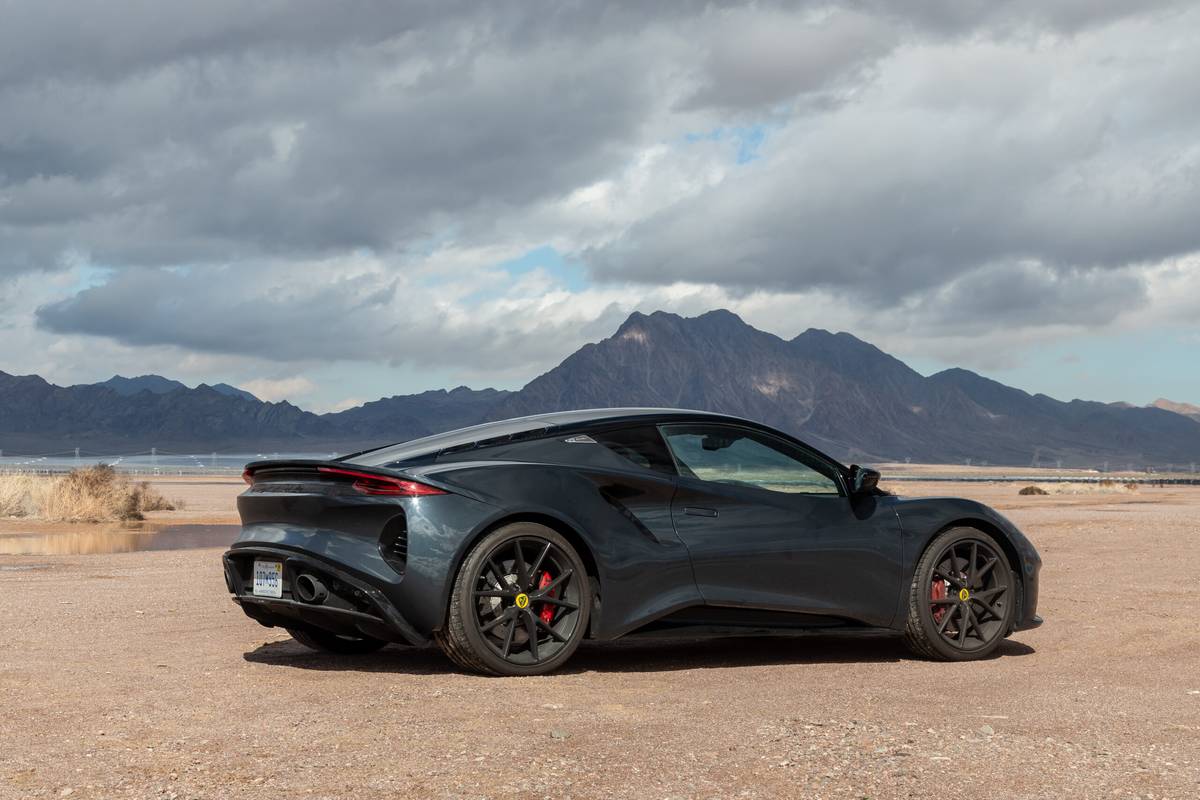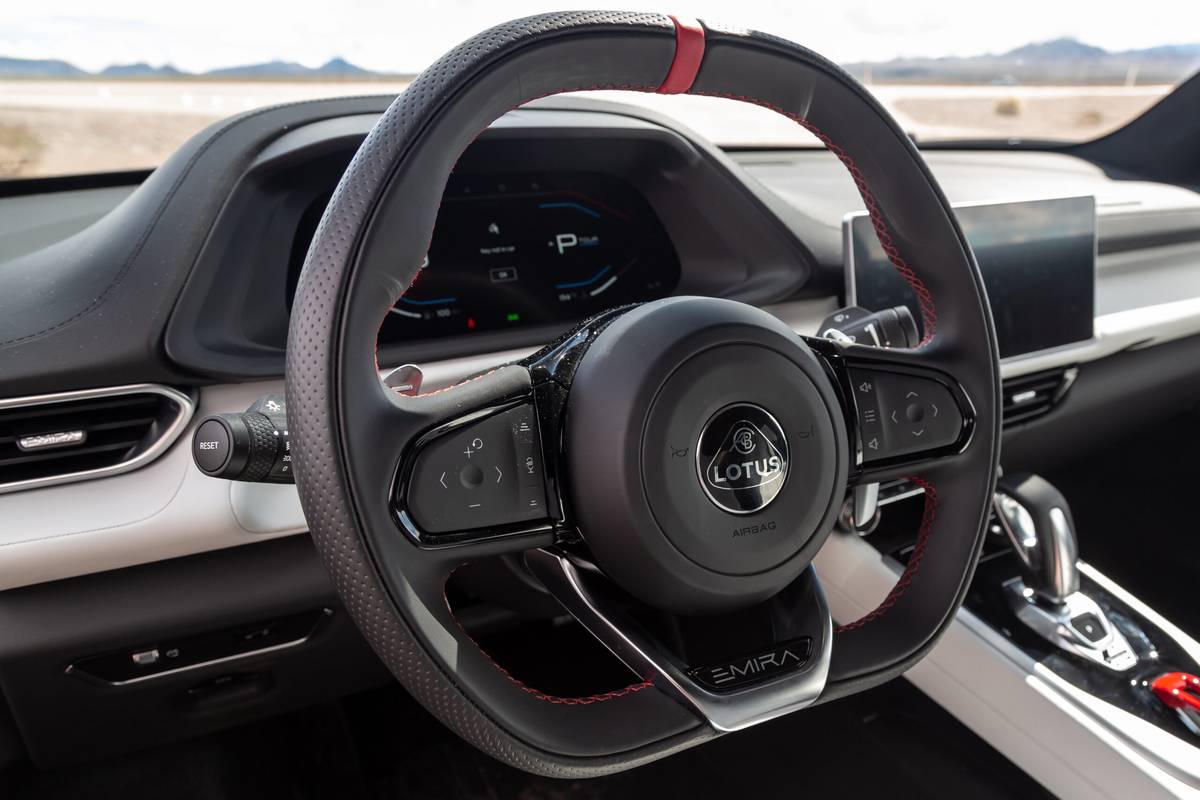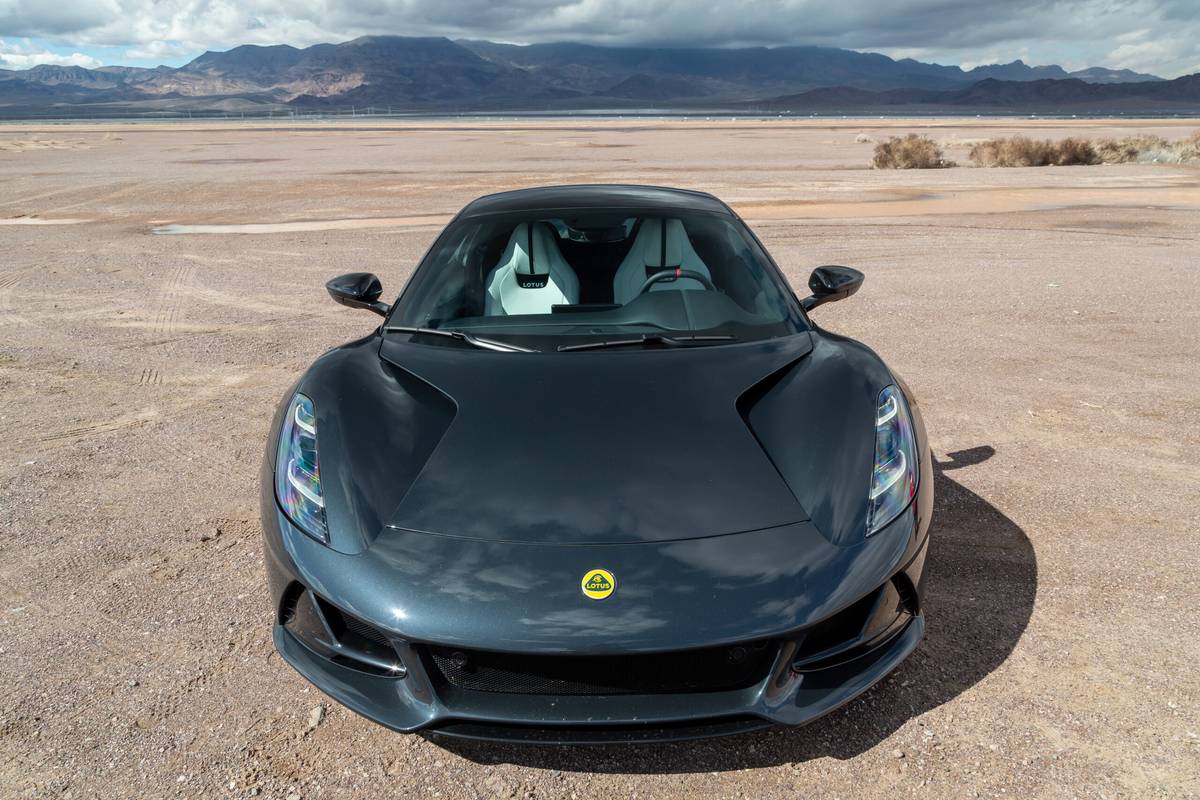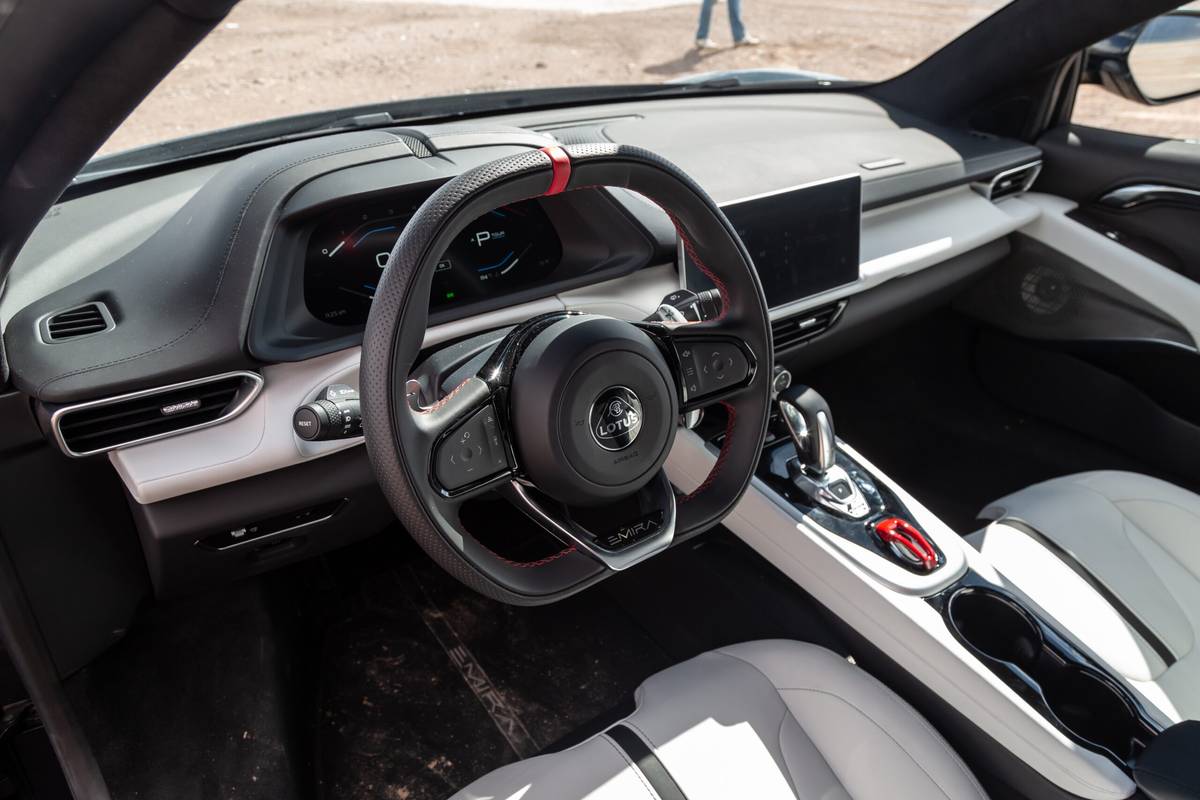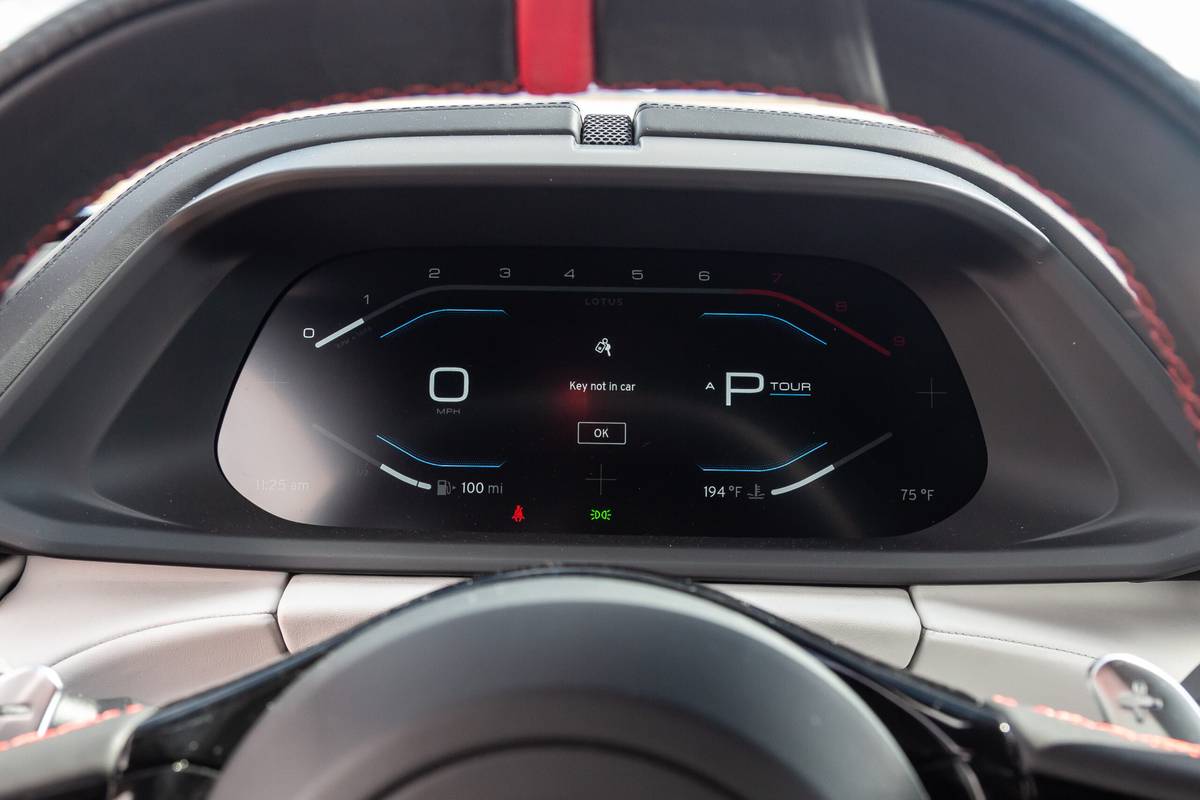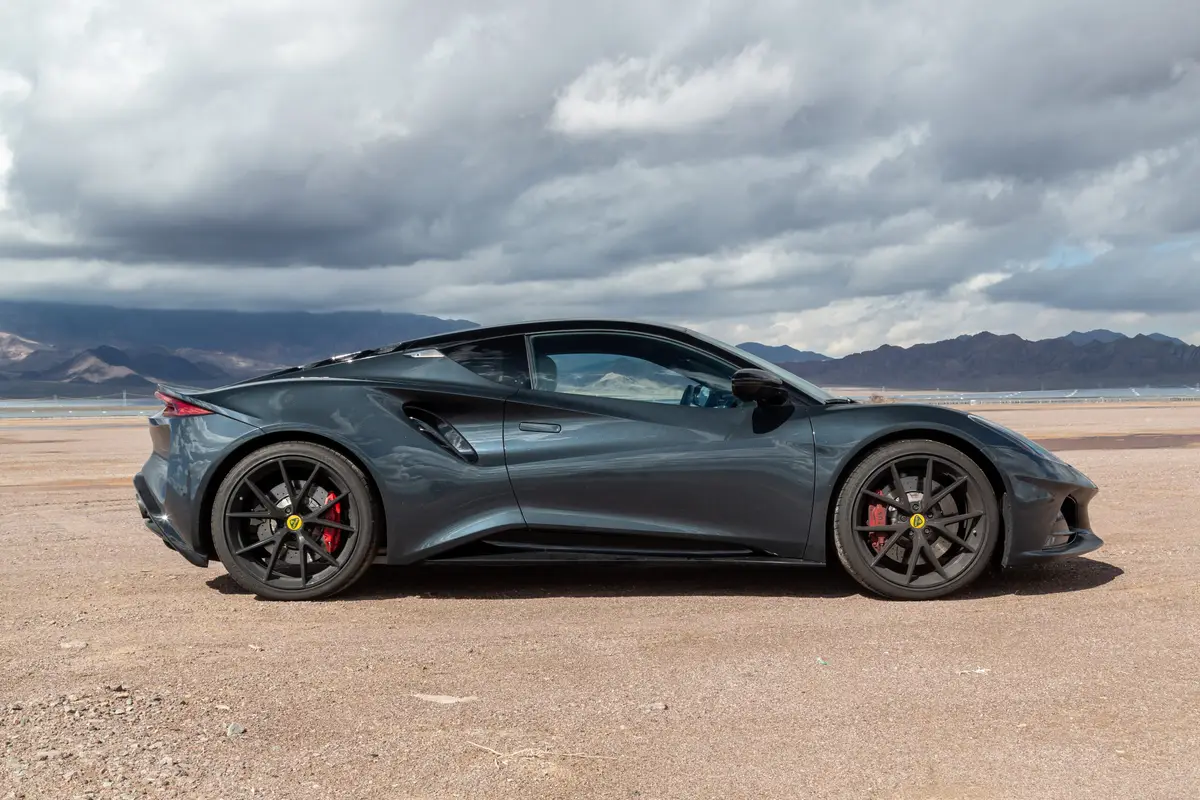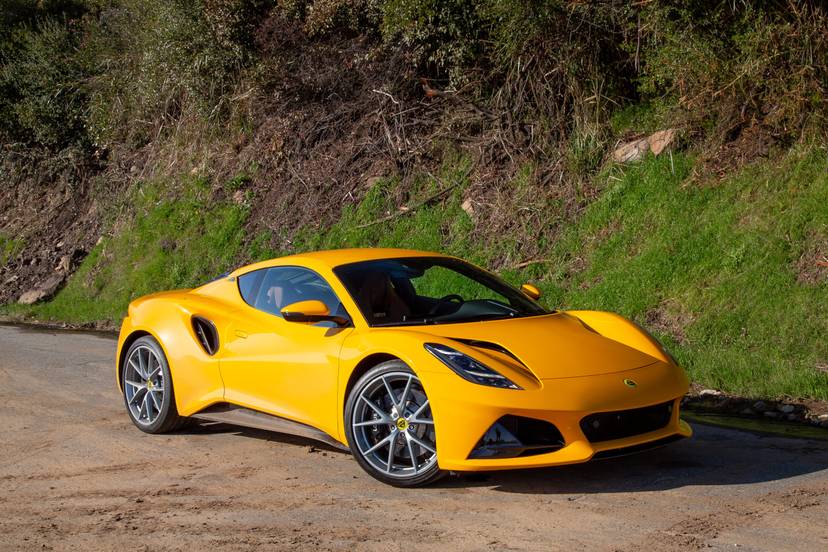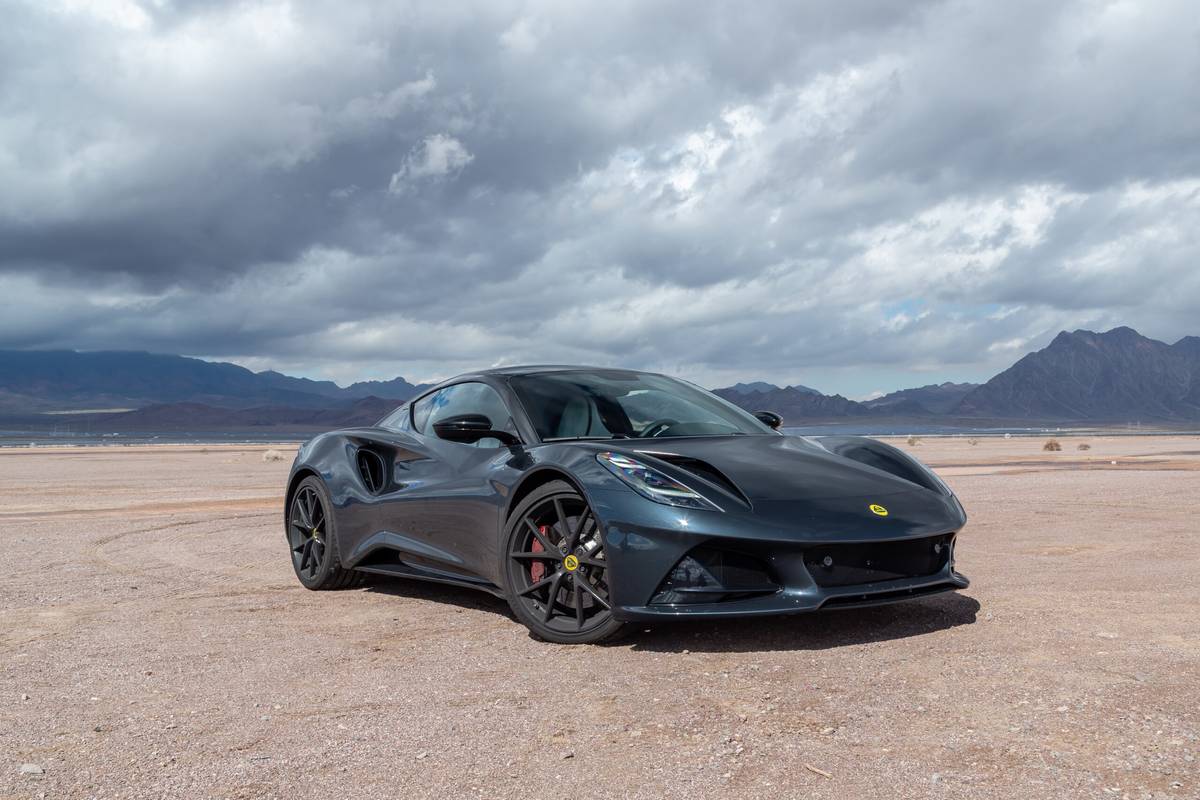
The verdict: The last gas-powered Lotus sports car is also arguably the best, with impeccable handling, an addictive soundtrack and an interior that no longer feels like an afterthought. Just make sure you pick the right transmission (hint: you should have three pedals).
Versus the competition: With a starting price tag just over $100,000, the Emira enters the fray against two juggernauts of performance and popularity: the Porsche 718 Cayman GTS 4.0 and Chevrolet Corvette. The Lotus stands its ground with an engaging driving experience that feels more rarified than either of those competitors.
If you’re considering — or occasionally consider — adding a new Lotus sports car to your garage, this is your sign to do it, because this is it: After the Lotus Emira leaves production, there’s a significant chance the storied British brand will no longer produce a gas-powered sports car. The fact that Lotus lives under the ownership of Chinese automaker Geely ensures the brand itself will endure, but think of the Emira as the end of the old guard — despite it being the best and most comprehensively modern sports car to ever buzz out of Hethel, England.
Related: 2024 Lotus Emira: Saving the Best for Last
If y’all dream of the Elise, Evora and Exige but are waffling on the Emira, I don’t want to hear a peep out of you when you find yourself facing down the charge port of the next hot Lotus. The automaker’s next two-seat sportster, codenamed Type 135, is all-electric and earmarked for the Emira’s market position, so it’s time to get your order in. Like, yesterday.
Related Video:
We cannot generate a video preview.
Choices, Choices
Ah, but how to spec it? The first decision to make when choosing a V-6-powered Emira is between the six-speed manual and six-speed automatic transmissions (the stick shift is the obvious choice regardless of use case). Then you must decide if your new manual-transmission Emira will ride on the Touring or Sport suspension, an apparently agonizing choice that has consumed Lotus forums for the better part of the past two years. The names are self-explanatory; Lotus suggests you pick the Touring setup if your Emira sees more road use than track time and the Sport suspension if you plan on parking it in the pits more than your driveway. I had the enviable pleasure of extended back-to-back drives with both Emira gearboxes, but both test cars rode on the Touring suspension, so I can only speak to the most comfortable spec.
On the Highway and in the Hills
The automatic-equipped Emira kicked things off. Facing a roughly four-hour drive from Los Angeles to Las Vegas to drive a McLaren 750S, I figured another low-production, mid-engine British performance car was the perfect road-trip vehicle. It was also a perfect opportunity to test the pliability of that Touring suspension and determine if the softest, silkiest version of the Emira was the wallowy wreck some of those forum posts claimed.
Not in the slightest. Both suspension configurations are fixed, with no active or adaptive damping to toggle between, and I struggled to think of a scenario in which the still-stiff Touring wouldn’t be capable enough for anyone’s favorite country road.
The rather bland stretch of Interstate 15 between L.A. and Vegas is hardly the Emira’s ideal environment, but I also spent a day and a half hucking the manual Emira through my favorite roads squiggling through the Santa Monica, Calif., mountains just north of Malibu. In this familiar and demanding environment, the “soft” Touring Emira was exactly the (mostly) analog, modern sports car it promises to be, with more than enough front-end bite, grip and innate confidence to accommodate alarmingly quick over-road blasts. Sport-equipped cars also add a tire choice; you can get a Sport straight from the factory wearing Lotus-specific Michelin Pilot Sport Cup 2s, which are among the greatest top-tier performance road tire around. Otherwise, your Emira Sport will arrive wearing a set of Goodyear Eagle F1s, the sole tire available on the Touring.
Based on my drive, if you’re pushing the limits of the Goodyears on a public road, you are a menace. Past experience shows there are stark differences in feel between Cup 2s and the competition, but from a purely performance perspective, they’re overkill on the Emira, particularly since you’re dealing with “only” 400 horsepower.
For 95% of enthusiasts, the Touring will be enough. Turn-in through the delicious hydraulic steering is progressive, with just a touch of initial slack and a granular “feel” that surpasses supercars costing three times as much as the Emira. Lotus’ past suspension work has long been considered a master class in balance, and that’s on full display with its latest effort. Everything loads up beautifully, with excellent communication through both the seat and the steering wheel.
Powerful, But Not Overly So
That’s just the dynamic stuff. While you’re exploring the chassis’ limits, a supercharged 3.5-liter V-6 engine lifted from the prior Evora howls just inches behind your head, producing 400 hp and 310 pounds-feet of torque with the manual. Those are stout figures, but the power never feels more than perfectly adequate. That’s far from an insult; too many modern performance cars prioritize explosive power and on-paper performance over sensation — the Emira channeling the latter like a busted hydrant.
Power delivery is among the most linear I’ve experienced in quite a while, with a solid, predictable rush available at nearly every vector of the tachometer. At full blast, you feel every bit of Lotus’ claimed 4.2-second 0-60 mph scramble, regardless of transmission. What it doesn’t feel like is overwhelming, in either the emotive or physical sense. The 295-millimeter-wide rear tires are broader than the 310 pounds-feet are thick, never breaking free unless you were to do something silly, like absolutely boot it mid-corner — and even then, you’ll catch any rear-end scuttle like a pop fly.
That said, drivers accustomed to faster, juicier weaponry might find the Emira a little slow for its $105,400 buy-in. General pace feels right on par with the current Porsche 718 Cayman GTS 4.0, and it would be modestly outgunned when facing down a 718 GT4 of any configuration. But even those cars feel frustratingly ubiquitous — short of a Pagani or Koenigsegg, nothing joyfully confuses like a Lotus. There’s more than a little Lamborghini up front and more than a lot of Ferrari in the hard-side silhouette; it throws folks way, way off.
On the highway, on the street and especially in a neighborhood, people will stop, stare and squint at this British wedge. “Oh man, that’s the new Lotus,” yelled one 20-something as I cruised down the main drag in Hermosa Beach. His friends were quick to correct — “No, I think that’s a Huracan or that new McLaren.” Gassing up outside of Vegas, a 911 driver approached with a thumbs up. “Evora?” “Emira,” I told him. “Oh, the one before it, huh?” He walked away before I could reply. The icing on this teatime cake was a parking ticket that read, “Porsche, sedan, yellow.” This was almost — almost — worth the $45 penalty.
Even if you’re not coating your Emira with my manual test car’s fantastic Hethel Yellow paint, don’t worry — that V-6 will still ensure all eyes are locked on this car. Though the engine’s heart is a Toyota V-6, an Edelbrock supercharger and internal fettling from Lotus ensure it sings like a chainsaw ripping through a crystal chandelier. It’s raspy in all the right ways, with a decidedly old-school tonality we thought had been left behind.
Transmission Talk
Provided you pick the right transmission, you’ll make frequent and full use of these pipes. The six-speed manual is also a carryover from the Evora — as is much of the general structure and platform under the Emira’s cyberpunk exterior — and it’s not quite as crisp as you’d expect. Shifts, however, are delightfully mechanical and direct once you become accustomed to its cadence of engagement, and I rarely wished for a tighter throw.
Other inputs were similarly joyful. Accelerator response is near-instantaneous, with full-fat revs in Neutral rewarding your right foot with a fluid snap and instant howl. The brakes are on the grabby side, but this aggressive bite was welcome during those canyon blasts. The pedals are slightly offset, but they’re spaced perfectly for the heel-toe shuffle.
I cannot extend the same praise to the Aisin six-speed automatic. Another carryover from the Evora, the automatic transmission displays distinct balkiness and herky-jerky shifting that’s more characteristic of the ancient single-clutch, automated manual gearboxes commonly found in supercars and sports cars from the late 1990s and early 2000s. Yes, that comparison is rather dire; the Emira’s gearbox isn’t remotely as bad as those disasters, but it’s certainly not as smooth, quick or intelligent as other modern automatics, such as the ZF eight-speed transmission.
More From Cars.com:
- 2024 Lotus Eletre R Quick Spin: Not Your Traditional Lotus
- 2025 Lotus Emeya Up Close: New Lotus, New Mission
- Which New Cars Have Manual Transmissions?
- Research Sports Cars
- Shop for a 2024 Lotus Emira
A Few Quirks, Big Strides Inside
So, it’s great to drive — shocker! I knew a 400-hp, mid-engine two-seat Lotus would be absolute crackers to flog well before my test car arrived. The most surprising aspect of the Emira didn’t kick in until roughly an hour down the road — but first, two Lotus quirks that made themselves visible within seconds of taking delivery.
The Emira arrived during an unusually heavy downpour in Los Angeles, and I immediately went to throw my carry-on suitcase in the storage area behind the engine lest I roll into Vegas with moldy clothes. Lifting the deck lid dropped a sizable splash of water onto the supercharger cover and portions of the surrounding bay, though it was clear the weather stripping was perfectly capable of keeping the water out when closed. In went the bag, but it proved to be too tall to close the deck lid. In a rush to get on the road, I chuckled and slid my bag in the passenger footwell. (Next time, I’ll take a duffle.)
It wasn’t until I was well clear of L.A. traffic that I realized the Emira’s most surprising feature: In the 70-ish miles of weather-induced gridlock, not once did the car hiccup, stutter or inconvenience me in any way. No leaks, no rattles, no problems. The interior is nicely appointed, with reserved and no-nonsense materials like microsuede, leather and plastics both soft and hard. Later iterations of the Evora were hardly the most unreliable and problematic cars on the market, but the interior was cramped and difficult to enter, with control ergonomics that bordered on baffling. Not so with the Emira; there’s plenty of shoulder, leg- and headroom, with well-stuffed sport seats and a dash layout that won’t leave you cockeyed. A crisp 12.3-inch digital display sits where the Evora’s analog instrument panel was, and a 10.25-inch infotainment touchscreen is recessed smartly into the dash structure. It all feels well thought out and “production,” so kudos both to Lotus and Geely.
Also impressive is the Emira’s digital architecture — the first ever implemented in a Lotus sports car. It’s not the most powerful or deepest user interface on the market, but it doesn’t have to be. Its sole purpose is coalescing all the buttons, switches and knobs that were previously scattered around the Evora’s dash into one place. Now, those infotainment and vehicle controls are managed through the UI, with basics like volume and climate adjustment relegated to physical controls on the lower portion of the dash.
It’s all so normal. Expect a subset of brand purists to decry this decluttering, but the Emira is so, so much better for it. If this car is to be a sales success, it will be via significant conquest sales from drivers bored with Porsches and Corvettes. With a striking design, fantastic driving fundamentals and tremendously improved fit and finish, it’s easily one of the greatest Lotuses in history.
It’s just a shame it’ll likely be the last of its kind. Get your order in now, or forever hold your peace.
Cars.com’s Editorial department is your source for automotive news and reviews. In line with Cars.com’s long-standing ethics policy, editors and reviewers don’t accept gifts or free trips from automakers. The Editorial department is independent of Cars.com’s advertising, sales and sponsored content departments.






